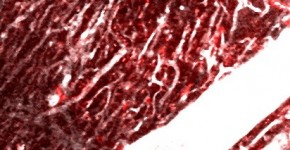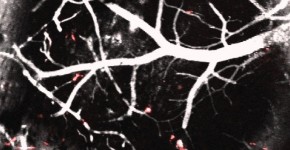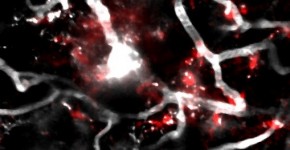
Although the heart drives blood flow in the body, little is known about the flow of blood within the heart muscle itself, especially at the microvascular level. This is because intravital microscopy of the beating heart is extremely difficult. We have now established a technique based on multiphoton-microscopy that enables us to image capillary blood flow within the beating heart and lets us ask questions about how the microcirculation can affect the function of heart.

Stem cells are responsible for regenerating tissue. In the small intestine, these special cells are tucked away into special niches with specific architecture that contributes to maintaining cell balance. The interaction of cells is thought to be very important and when disrupted, can lead to tumors. Metastasis, the process in which cancer cells spread to from a primary tumor to other organs, is one of the deadliest features of cancer and also one of the hardest to control. Cancer cells are thought to shed from the primary tumor, invade the circulatory system and then use the blood vessels to get to new organs. However, most primary tumors tend to metastasize to certain organs and not others. Understanding this process may help us understand how to intervene with metastasis.

The brain is one of the most systems and is not well understood in both normal function and in disease. Neurons are packed densely into the brain, making it difficult to disentangle neural circuitry. In addition, there are many different cell types that influence how neurons can perform. Alzheimer’s disease (AD) is the leading cause of dementia in adults in the US. AD is characterized by the accumulation of peptides called Aβ that become toxic as they oligomerize and aggregate further into plaques. We normally produce and clear Aβ throughout life, but why Aβ accumulates later in life and drives disease is largely unknown. In ongoing work with the Schaffer lab, we use transgenic mouse models of AD to ask how microvascular dysfunction contributes to AD.